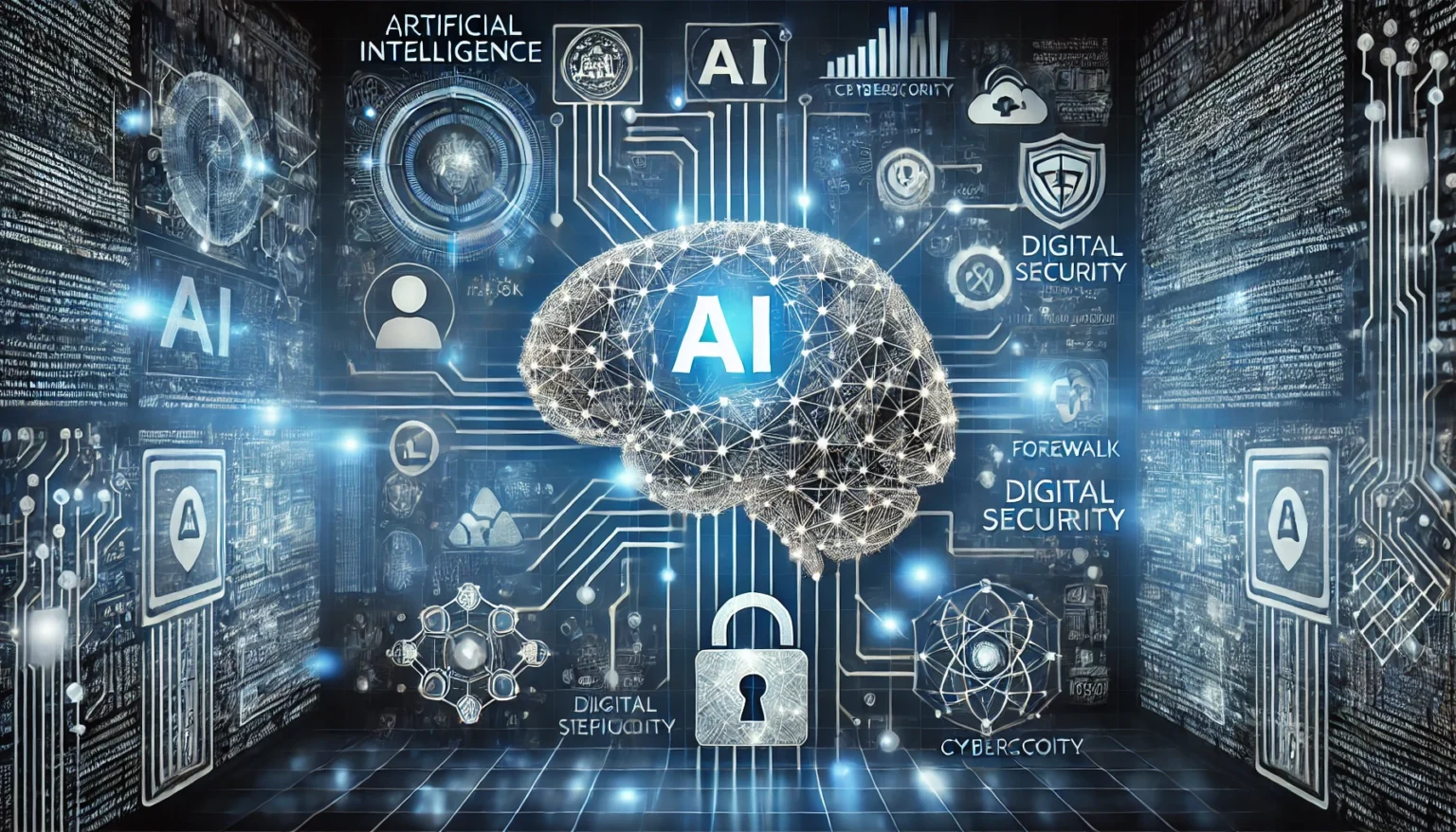In today’s digital world, cybersecurity is more critical than ever. With increasing data breaches, ransomware attacks, and other cyber threats, organizations must be proactive in protecting their sensitive information. Artificial Intelligence (AI) is transforming the cybersecurity landscape, making it smarter, faster, and more efficient in detecting and mitigating cyber threats.
What is AI in Cybersecurity?
Artificial Intelligence refers to the simulation of human intelligence in machines, enabling them to perform tasks that typically require human intervention, such as decision-making, learning, and problem-solving. In cybersecurity, AI is applied to improve threat detection, automate responses, and identify vulnerabilities within systems. With the ability to analyze large volumes of data, AI can quickly recognize patterns that would be impossible for humans to detect.
How AI Enhances Cybersecurity
- Threat Detection and Prevention
AI plays a pivotal role in identifying potential threats in real time. By using machine learning algorithms, AI systems can detect unusual behavior or suspicious patterns in network traffic. These algorithms learn from historical data, allowing them to adapt to new threats without human intervention. For example, AI can spot anomalies like a sudden surge in login attempts or abnormal file access patterns, which could indicate a potential cyber attack.
- Automated Response Systems
One of the most significant advantages of AI in cybersecurity is automation. AI-powered security systems can respond to threats much faster than human teams. These systems can automatically isolate infected machines, block malicious traffic, and apply security patches in response to identified vulnerabilities. This rapid response is essential for minimizing damage and reducing the window of opportunity for cybercriminals to exploit weaknesses.
- Predictive Analytics
AI can predict potential future threats by analyzing historical data and identifying trends that might indicate an impending attack. Predictive analytics enable organizations to be proactive rather than reactive. By understanding these patterns, businesses can strengthen their defenses and deploy resources more effectively to prevent attacks before they occur.
- Vulnerability Management
AI can be used to scan systems and applications for vulnerabilities, providing security teams with a comprehensive report on potential weaknesses. By continuously analyzing software and hardware configurations, AI can identify security gaps that might otherwise go unnoticed. This helps organizations take immediate action to patch vulnerabilities, reducing the risk of cyberattacks.
- Phishing Detection
Phishing attacks remain one of the most common methods used by cybercriminals to steal sensitive information. AI can detect phishing attempts by analyzing email content and identifying suspicious links, attachments, or misleading language. AI-powered email filters can automatically block or flag these emails, reducing the likelihood that users will fall victim to such scams.
Benefits of AI in Cybersecurity
- Speed and Efficiency
AI can analyze vast amounts of data in real time, making it much faster and more efficient than traditional methods of threat detection. It can process and analyze more data points than a human security analyst ever could, ensuring that threats are detected quickly and accurately.
- Reduced Human Error
Cybersecurity professionals are highly skilled, but human error is still a common cause of security breaches. AI minimizes the risk of human error by automating complex tasks like threat analysis, response, and vulnerability scanning. This ensures that security measures are consistently applied without the chance of oversight or mistakes.
- Scalability
As organizations grow, their cybersecurity needs also grow. AI systems are highly scalable, meaning they can handle increasing amounts of data and adapt to the evolving cyber threat landscape. This scalability makes AI an ideal solution for both small businesses and large enterprises.
- Cost-Effectiveness
While implementing AI-powered cybersecurity solutions can require an initial investment, the long-term benefits outweigh the costs. By automating threat detection and response, AI reduces the need for large security teams and decreases the cost of responding to and recovering from cyberattacks.
Challenges and Limitations of AI in Cybersecurity
Despite its many benefits, AI in cybersecurity is not without its challenges:
- False Positives
AI systems are not always perfect, and there is a risk of false positives—legitimate activities being flagged as threats. This can lead to unnecessary alerts and actions, which might waste time and resources. However, as AI models continue to improve, the frequency of false positives is expected to decrease.
- Adversarial AI
Cybercriminals are becoming increasingly sophisticated, and some are using AI to carry out attacks. Adversarial AI can be used to manipulate machine learning models, making it harder for security systems to detect malicious activity. It is essential for cybersecurity experts to stay ahead of these threats by continually updating and improving AI systems.
- Data Privacy Concerns
AI systems rely on vast amounts of data to function effectively. While this enables AI to detect threats accurately, it also raises concerns about data privacy and security. Organizations must ensure that they are using AI responsibly and in compliance with privacy regulations to protect sensitive information.
The Future of AI in Cybersecurity
The role of AI in cybersecurity is expected to grow significantly in the coming years. As cyber threats continue to evolve, AI will become an even more critical component in protecting digital assets. AI will likely integrate with other technologies like blockchain, biometric authentication, and advanced encryption methods to provide multi-layered security solutions.
In addition, AI will continue to evolve to handle more complex threats, such as zero-day vulnerabilities and insider threats. As the technology matures, organizations will increasingly rely on AI to not only detect and prevent cyberattacks but also to predict and adapt to new threats before they become widespread.
Conclusion
AI is transforming the cybersecurity landscape by enhancing threat detection, automating responses, and predicting potential future attacks. While there are challenges associated with implementing AI in cybersecurity, its benefits far outweigh the drawbacks. As AI continues to evolve, it will play an even more significant role in safeguarding organizations against the ever-growing threat of cybercrime. By embracing AI-powered cybersecurity solutions, businesses can stay one step ahead of cybercriminals and ensure their data remains secure.
FAQs
1. How does AI improve cybersecurity? AI improves cybersecurity by automating threat detection, identifying vulnerabilities, and predicting future attacks, making it faster and more efficient than traditional methods.
2. What are the challenges of using AI in cybersecurity? Challenges include false positives, adversarial AI, and data privacy concerns, but as AI technology evolves, these issues are expected to be mitigated.
3. Can AI completely replace human cybersecurity experts? AI cannot entirely replace human experts, but it can significantly enhance their work by automating routine tasks and providing real-time threat analysis.
4. What is predictive analytics in cybersecurity? Predictive analytics uses historical data and trends to predict potential future cyber threats, allowing organizations to take proactive measures before attacks occur.

Liam is a seasoned technology writer with a passion for exploring the latest advancements in software, AI, and digital innovation. With years of experience in tech journalism, he breaks down complex topics into engaging, informative content that keeps readers ahead of the curve.








